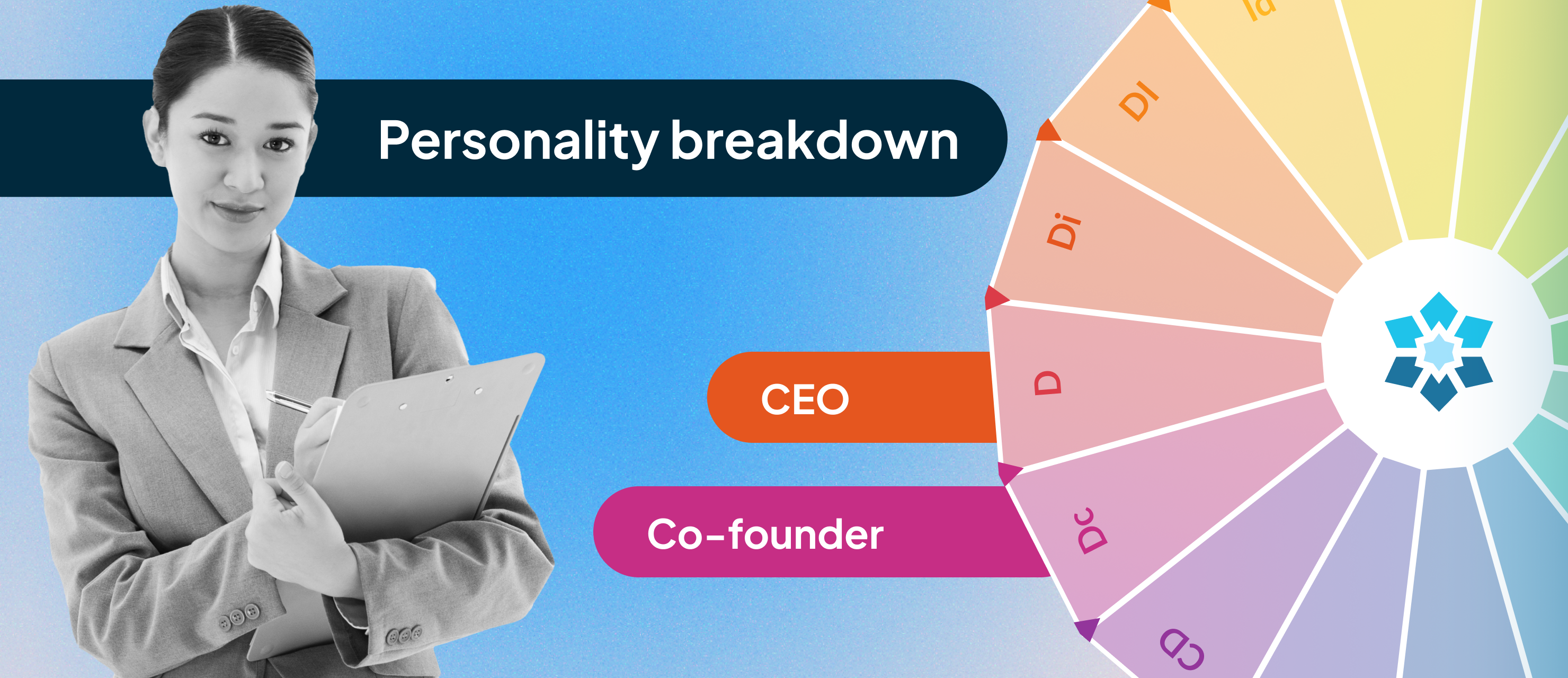
When you’re looking to add someone new to your team, it can be challenging to know after one or two short interviews whether or not they’ll be the right person for your company. How are you supposed to know who’s a good fit?
Here at Crystal, we understand how intimidating the decision to hire someone can be. We experienced it ourselves so we created and started using a tool called a “Role Report” to find a perfect candidate for every role. This convenient tool uses personality technology to ensure a good match for each position. In order to completely understand the Role Report, we must first learn a bit about personality.
Introducing DISC
We use a framework called DISC to better understand individual personalities. This classifies personalities into a few categories we refer to as D (dominance), I (influence), S (steadiness), and C (conscientiousness). By categorizing personalities in this way, we can communicate with others in a way that helps them understand and relate to us. For example, someone who is a supportive, people-oriented S-type is unlikely to appreciate a logical, fact-based discussion. They may become bored or frustrated, missing the point of the conversation entirely. On the other hand, if they were an analytical, questioning C-type, they would probably appreciate a discussion focused on specific, concrete facts and avoiding too much emotion. To read more about DISC types, visit our Personality Hub.
How to use Role Reports
When working to understand a candidate’s potential, personality type alone cannot tell you if they are a good fit. You also need to understand:
- The behaviors you and your team are expecting from the role.
- The strengths and potential blind spots typically associated with the candidate’s personality.
- If the candidate has developed the necessary skills to manage their blind spots
Blind spots are behaviors that do not come naturally to a person, but are sometimes necessary for a particular situation and require the person to adapt.
You can gather this kind of data from Crystal’s Role Report. The Role Report helps you see how specific candidates are likely to fit the expectations for a certain position; it also provides specific interview questions based on areas where the candidate may need to adapt or adjust their behavior to succeed. There are a few steps to using Role Reports:
1. Take a Role Expectations Survey
Each member of your team who is a stakeholder in the hiring process, such as the hiring manager, recruiter and key co-workers, should complete this brief survey. The survey allows them to rate a list of behaviors on a five-point scale from Unimportant to Important. It allows each person to share their input on what behaviors the ideal candidate should possess. For example, are you looking for someone who is comfortable following a routine process each day or someone who needs to constantly brainstorm ideas to create new processes?
Let’s say you are looking to fill a Product Manager position at your company. The hiring manager and anyone who needs to work alongside this person would complete the survey to outline the expected role behaviors.
2. View Ideal Personality Type
Once everyone has completed the survey, Crystal will calculate the ideal personality type for the role and show it visually on the Personality Map.
Let’s say your team has requested qualities most typical of an Analyst (C): they should be able to analyze lots of data, work well independently, and closely follow procedures.
3. See How Candidates Compare
The next step would be to have candidates complete the Crystal Personality Assessment so you have the most accurate personality profile for them. In the example below, a candidate had the assessment result of a Motivator (I), which is very far across the personality map from your expected behaviors for the Product Manager role.
This does not necessarily mean the candidate cannot succeed in the role. They may actually still be a very good fit. However, it does mean you need to verify they have developed the skills to adapt to the behaviors that do not come as naturally for them. In general, I-types like Motivators tend to be more open, collaborative, and driven by instinct. For this role, they would need to work in a very different style.
To understand this, you can ask the candidate the Crystal suggested interview questions on the Candidate Report. They reflect the important behaviors for the role which are most likely outside of the candidate’s comfort zone.
By verifying they can perform the expected behaviors for the role, you can ensure you hire the right candidate.
Hire the right candidates
Role Reports is a simple tool to help guarantee you hire the right candidate. While some candidates are qualified and have developed the ability to do behaviors that would traditionally drain them, for the most part, hiring (and holding onto) the right person depends on how well they will work with the group and how much they will enjoy their work. Rather than worrying about unnecessary turnover or an unbalanced work environment, use Role Reports to make a few small changes to your hiring process that will help you easily identify the right person for the job.
Click the link to learn more about using Crystal to help hire the right people.








